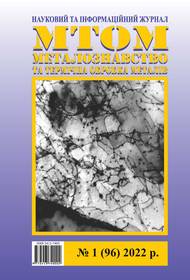IMPROVING ENERGY EFFICIENCY OF CONSTRUCTIVE SOLUTIONS FOR JOINTS OF PREFABRICATED REINFORCED CONCRETE STRUCTURES
DOI:
https://doi.org/10.30838/J.PMHTM.2413.240422.32.840Keywords:
wall panel, joint of reinforced concrete structures, energy efficiencyAbstract
Formulation of the problem. A significant number of buildings in Ukraine were designed and constructed without energy efficiency as a priority during the period of mass construction when there were not separate requirements set in legislation specifically concerning the energy efficiency of buildings. According to current standards such houses need to be insulated. Obsolete heat metering units and thermal appliances must be replaced. Rising energy costs, environmental and other factors are forcing improvements in the energy efficiency of building structures without significantly increasing construction costs. Purpose of research is to analyze the existing constructive solutions for joints of prefabricated reinforced concrete structures and to subsequently determine the possibilities for increasing energy efficiency and improving their structural and technological solutions. Results. Visual inspection of multi-storey buildings structures from prefabricated expanded clay concrete panels on the current standards basis was carried out. Thermographic test for the joints of prefabricated expanded clay concrete panels with a thickness of 350 mm was performed using a thermal imager “testo 875-2”. Numerous modeling of temperature distribution in the joint and thickness of the building structure was carried out using the ELCUT software package (ELCUT software package is used to solve problems of thermodynamics; stationary or non-stationary heat transfer and construction using finite element modeling of two-dimensional or three-dimensional thermal fields). The existing constructive solutions for the joints of single-layer and three-layer wall panels have been analysed. Application experience of improved constructive solutions is received. Conclusions. It is shown that the use of multi-layer wall panels has energy-efficient advantages over the use of single-layer structures. Improvement in the joints structures of multilayer panels nullifies the technological advantages of using single-layer structures. It is necessary the further modernization of the proposed constructive solutions to simplify technological and assembling processes.

Downloads
Published
Issue
Section
License
Authors that are published in this journal agree to follow the conditions:
Authors reserve the right to the authorship of his work and cede the right to the journal of first publication of this work on conditions of the license under the Creative Commons Attribution License, which allows others to distribute it freely with the obligatory reference to the author of the original work and the first publication of the work in this journal.
